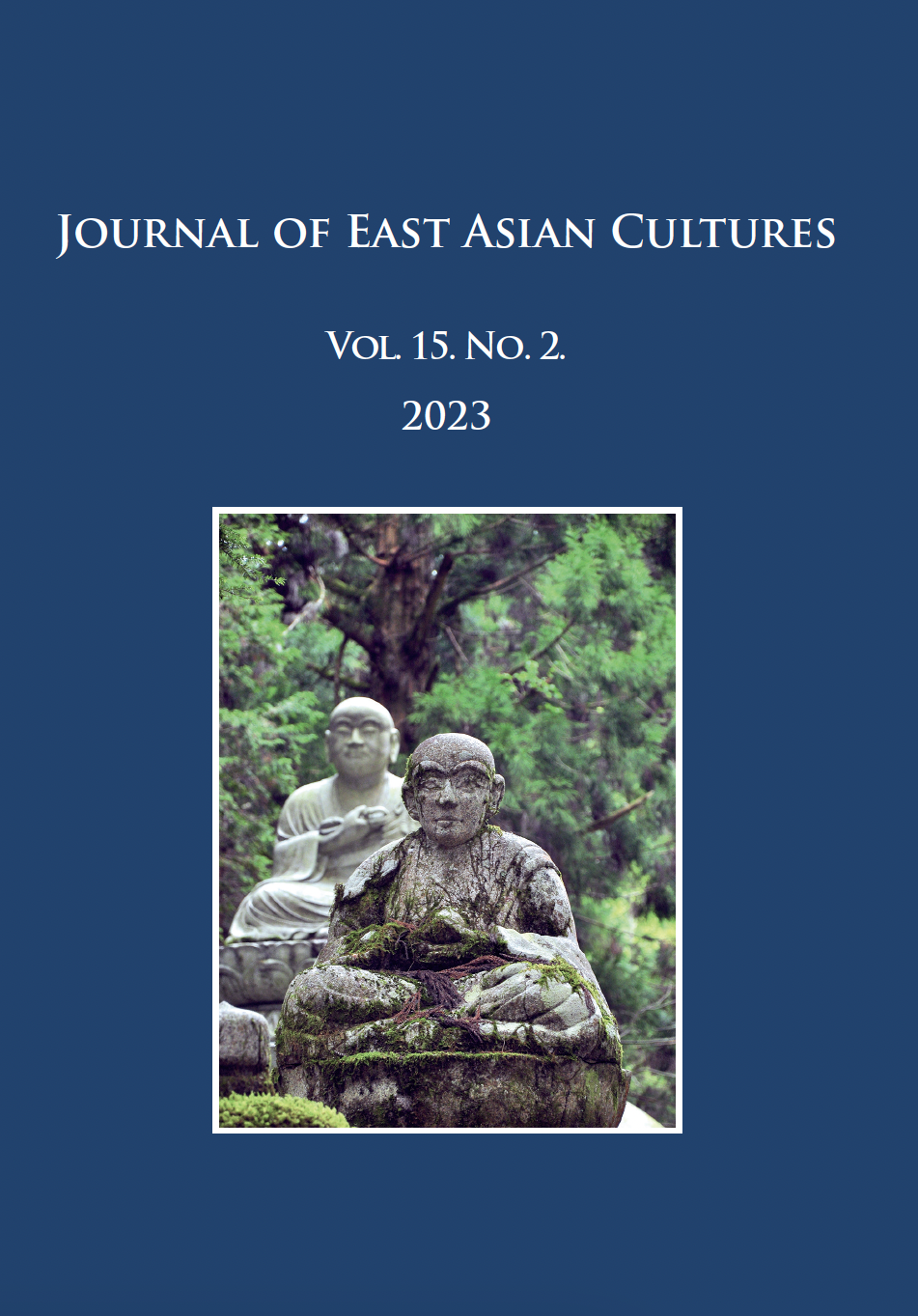Megjelent 2023-09-30
Kulcsszavak
- arhat,
- buddhaság,
- Dasheng dayizhang,
- az alapvető tudatlanság tisztátlansága,
- Fahua yiji
- Fayun,
- Kumārajīva,
- Lótusz Szútra,
- egy-kocsi,
- Śrīmālā-simhanāda Szútra ...Tovább
Hogyan kell idézni

This work is licensed under a Creative Commons Attribution-NonCommercial 4.0 International License.
Absztrakt
The Lotus Sutra is well known for its teaching of the One Vehicle. According to this teaching, although the Buddha preached that there are three paths to buddhahood (the paths of the śrāvakas, pratyekabuddhas and bodhisattva), there is in fact only one path of practice in Buddhism: the teaching of the bodhisattva leading to complete enlightenment. This implies that those who have attained the goal of arhathood through the practice of the śrāvaka path must ultimately convert to the bodhisattva path and continue their practices until they attain buddhahood. However, there is a problem since arhats are said to have destroyed all the defilements binding them to continued existence within the realms of transmigration, meaning that they must necessarily enter nirvāṇa at the end of their lives and are therefore prevented from continuing their practices to reach buddhahood. In this paper, I will introduce the theories of Kumārajīva and Fayun who argued, on the basis of the Dazhidulum and the Śrīmālā-simhanāda Sūtra respectively, that arhats are indeed capable of attaining buddhahood since they have not yet destroyed their defilements completely and still retain a subtle form of defilement.
The Lotus Sutra is well known for its teaching of the One Vehicle. According to this teaching, although the Buddha preached that there are three paths to buddhahood (the paths of the śrāvakas, pratyekabuddhas and bodhisattva), there is in fact only one path of practice in Buddhism: the teaching of the bodhisattva leading to complete enlightenment. This implies that those who have attained the goal of arhathood through the practice of the śrāvaka path must ultimately convert to the bodhisattva path and continue their practices until they attain buddhahood. However, there is a problem since arhats are said to have destroyed all the defilements binding them to continued existence within the realms of transmigration, meaning that they must necessarily enter nirvāṇa at the end of their lives and are therefore prevented from continuing their practices to reach buddhahood. In this paper, I will introduce the theories employed by Kumārajīva and Fayun to explain this conundrum. Kumārajīva, a noted translator of Buddhist texts into Chinese, engaged in an exchange of letters with Huiyuan of Mt. Lu, one of the most respected Chinese Buddhist of his age. In one exchange, Kumārajīva specifically deals with the question of how arhats can attain buddhahood and argues that, although arhats believe they have eradicated all defilements, they have not actually done so. Taking his cue from the Dazhidulum, Kumārajīva argues they still possess what he terms “love towards nirvāṇa and the buddha dharma.” Hence, he concludes, arhats have not actually rid themselves of all defilements but must still remain within the cycle of transmigration undertaking bodhisattva practices until they extinguish these subtle forms of defilements and achieve buddhahood. Fayun, who lived approximately a century after Kumārajīva, was a noted scholar monk who wrote an influential commentary on the Lotus Sutra. In this commentary, Fayun also argues that arhats are capable of achieving buddhahood since they are still encumbered by defilements. However, in making his argument, Fayun relies on the theory of five levels of defilements taken from the Śrīmālā-simhanāda Sūtra. According to this theory, arhats have destroyed the latent defilements, the first four of the five levels of defilements described in the sūtra, but have yet to eradicate the defilements of fundamental ignorance, the final and most profound form of defilements. By availing himself to this theory, Fayun argues that arhats are indeed capable of attaining buddhahood since they still possess the defilements of fundamental ignorance which prevents them from entering extinction in nirvāṇa, allowing them to continue their practices as bodhisattvas until they achieve complete buddhahood.
Hivatkozások
- T Taishō shinshū daizōkyō大正新修大蔵経. 85 vols. Eds. Takakusu, Junjirō 高楠順次郎 – Watanabe, Kaikyoku 渡辺海旭. Tokyo: Taishō issaikyō kankōkai, 1924–1934.
- Hurvitz, Leon 1960. ‘Daijō daigishō ni okeru ichijō sanjō no mondai大乗大義章における一乗三乗の問題 [The Problems of the Ekayāna and Triyāna in the Essay on the Meaning of Mahāyāna].’ In: Kimura Eiichi 木村栄一 (ed.) Eon kenkyū: Kenkyūhen 慧遠研究―研究篇 [Research on Huiyuan – Research Volume]. Tokyo: Sōbunsha, 169–193.
- Hurvitz, Leon 2009. Scripture of the Lotus Blossom of the Fine Dharma (The Lotus Sutra). New York: Columbia University Press.
- Kanno Hiroshi 菅野博史 1996. Hokke giki 法華義記 [The Meaning of the Lotus Sutra]. Tokyo: Daizō shuppan.
- Kimura Eiichi 木村栄一 (ed.) 1960. Eon kenkyū: Ibunhen 慧遠研究―遺文編 [Research on Huiyuan – Remaining Writings Volume]. Tokyo: Sōbunsha.
- Lamotte, Etienne 1974. ‘Passions and Impregnations in Buddhism.’ In: L. Cousins et. al. (eds.) Buddhist Studies in Honour of I. B. Horner. Dordrecht: D. Reidel, 91–104. https://doi.org/10.1007/978-94-010-2242-2_10
- Ōchō Enichi 横超慧日 – Suwa, Gijun 諏訪義純 1982. Rajū 羅什 [Kumārajīva]. Tokyo: Daizō shuppan.
- Paul, Diana Y. – McRae, John R. 2004. The Sutra of Queen Śrīmālā of the Lion’s Roar and The Vimalakīrti Sutra. Berkeley, CA: Numata Center for Buddhist Translation and Research.
- Pye, Michael 1978. Skillful Means: A Concept in Mahāyāna Buddhism. London: Duckworth.
- Zurcher, Erik 1959. The Buddhist Conquest of China. 2 vols. Leiden: Brill.

